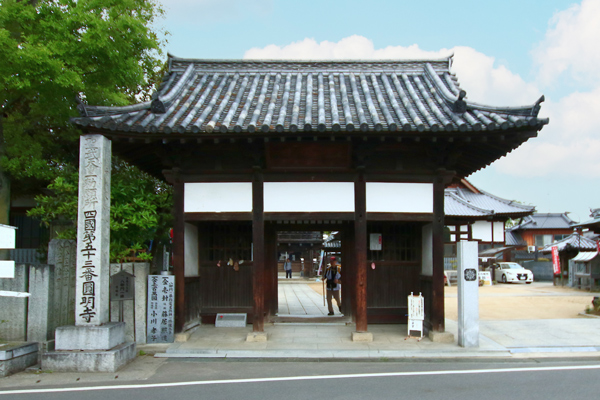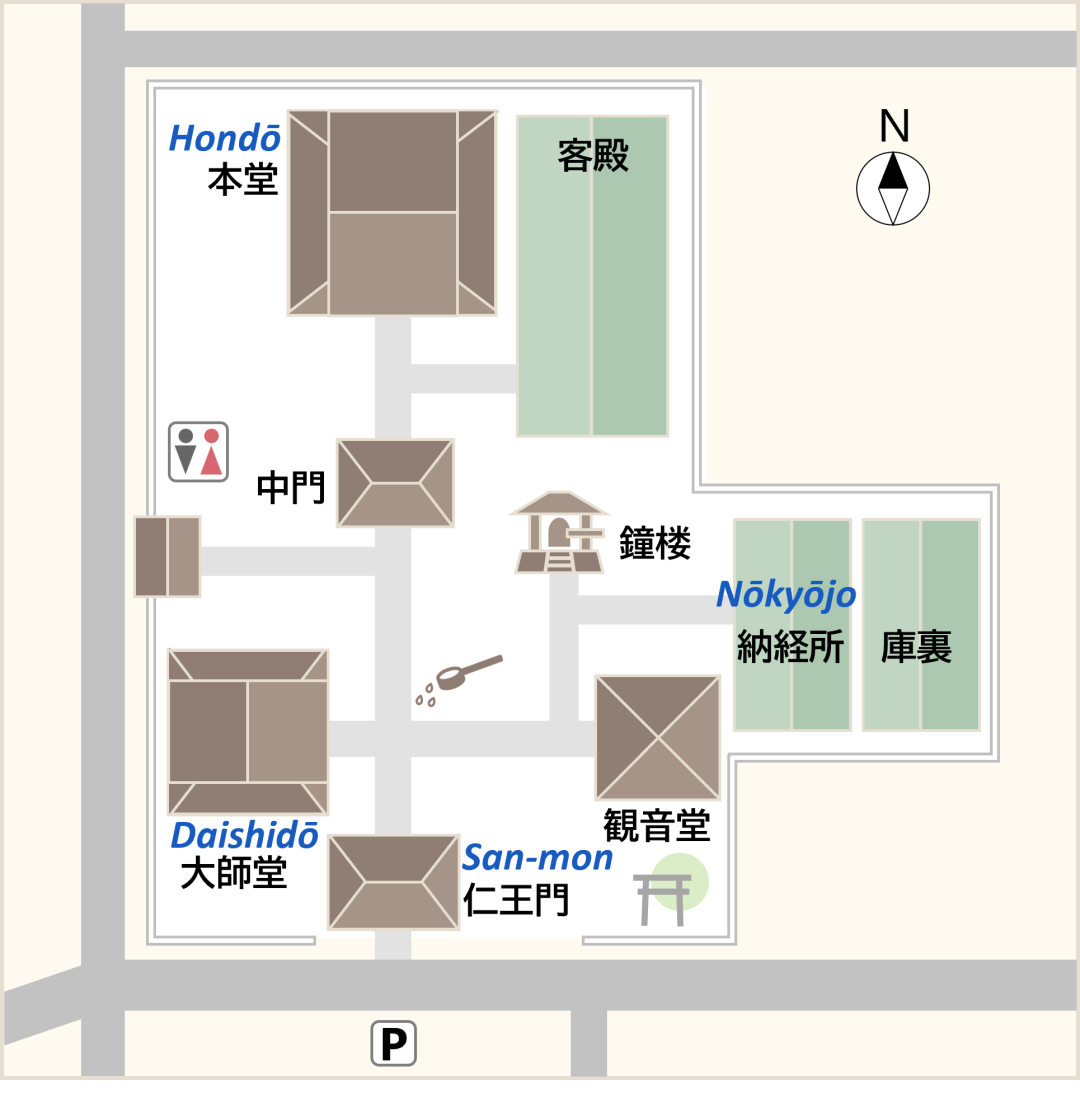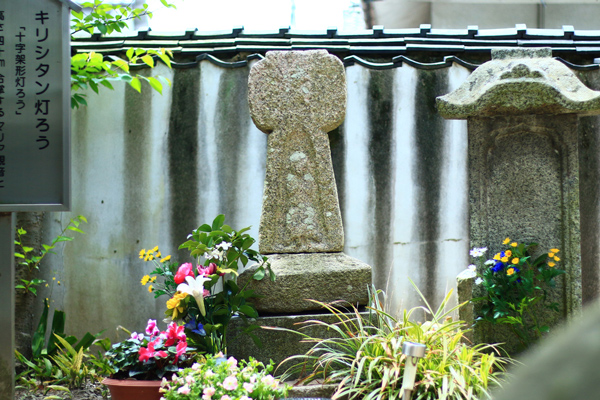The Shikoku Pilgrimage Temple Guide
Temple 53, Enmyōji

Precinct map

History of the temple
Enmyōji preserves the oldest copper name slip on the Shikoku Pilgrimage. It was discovered by an American pilgrim, Dr. Stahl of the University of Chicago, in March 1924 when he was doing the Shikoku Pilgrimage. He found a copper plate stamped in the case where the temple's principal image, Amida Nyorai (Buddha of Limitless Light and Life) was enshrined. It is the oldest undamaged copper name slip in existence.
The name of the person who left this copper name slip here was Higuchi Heijin Ietsugu,. He was known for rebuilding Rengeji in Kyoto. He donated stone statues of the Gochi Nyorai. What is particularly noteworthy about this slip is that it is the first documented use of the word henro.
According to legend, in 729, at the order of Emperor Shomu (reigned 724-749), Gyoki carved the principal image of Amida Nyorai and the attendant images of Kannon (Bodhisattva Who Hears the Sounds of the World) and Seishi Bosatsu (Bodhisattva of Strength and Wisdom). He built a large temple with seven main buildings and enshrined the statues. At that time, the temple was located on the coast of Nishiyama, Wakehama, and was called Kaiganzan Enmyōmitsuji.
Kobo Daishi found the temple in ruinous condition. He rebuilt the ruined halls and reestablished the temple as a sacred site. However, the temple lost its prosperity due to repeated fires during the wars of the Kamakura period (1185-1333), and it was moved to its current location by Suga Shigehisa, a powerful local lord, during the Genna era (1615-1624). In 1636 the temple was rebuilt as a direct successor to Ninnaji in Kyoto by order of Kakushin Nyudoshinno of the Omuro school and the temple name was changed to Enmyōji at that time. It is also known for some Christian lanterns with the image of the Virgin Mary carved in relief.
Highlights
Kirishitan Stone Lantern
This is a 40 cm high lantern located by the wall to the left of the Daishido. During the era of Christian prohibition (1614-1873), there were many Christians in this region, and the temple seems to have tolerated the worship activities of these kakure kirishitan (hidden Christians).
Dragon by Hidari Jingoro
This 5-meter-long carving is located on the upper right side of Hondo. It is said that the eyes of the dragon light up when it is looked at by a person of bad conduct.
Kannondo Hall
A statue of the Juichimen Kannon is enshrined here. An inscription on the pedestal bears the date “the 5th year of the Keicho era” (1600).

Details
Names: Sugazan, Shōchiin, Enmyōji
Denomination: Shingon sect, Chizan school
Principal image: Amida Nyorai
Founder: Gyoki
Founded: 749
Access
Address: 1-182, Wake-cho, Matsuyama City, Ehime 799-2656
Phone: 089-978-1129
Parking: Available (free of charge)
Lodging: None
Official website: None
